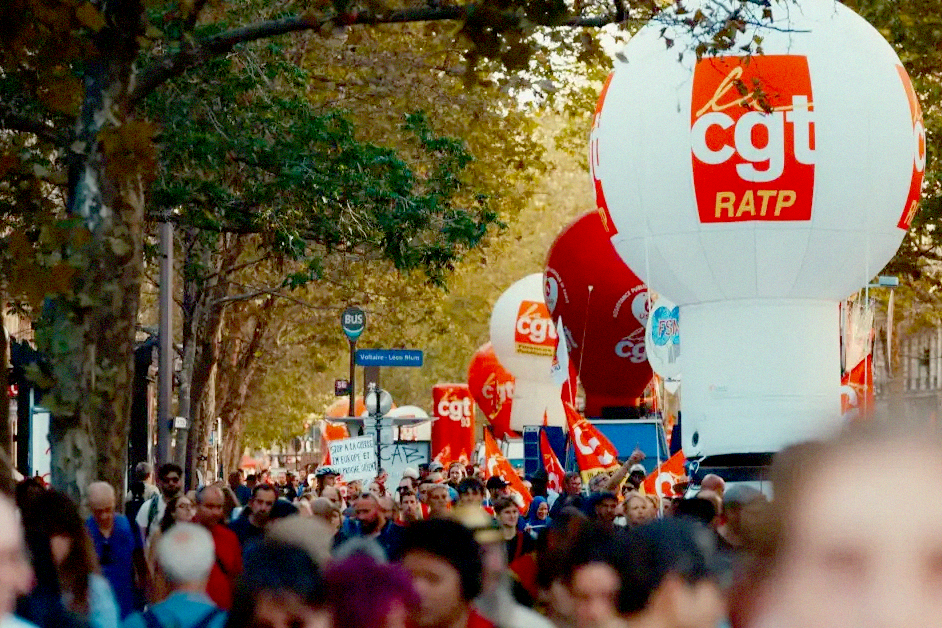According to the Bundesbank, German
GDP grew by 3.6% in 2010. This comes after the steep 4.7% drop in 2009,
when the recession hit Germany hard. Unemployment has gone down from the
10.5% peak of 2005 to 7%. It now stands at just under three million.
Volkswagen is taking on 3,000 workers, BMW and Daimler 400 each.
Lufthansa has announced plans to take on an extra 4,000 staff this year.
The same picture can be seen in chemicals, electronics and other
industries. When the rest of Europe is facing lay-offs and sluggish
growth, what is different about Germany?
According to the Bundesbank, German
GDP grew by 3.6% in 2010. This comes after the steep 4.7% drop in 2009,
when the recession hit Germany hard. Unemployment has gone down from the
10.5% peak of 2005 to 7%. It now stands at just under three million.
Volkswagen is taking on 3,000 workers, BMW and Daimler 400 each.
Lufthansa has announced plans to take on an extra 4,000 staff this year.
The same picture can be seen in chemicals, electronics and other
industries. When the rest of Europe is facing lay-offs and sluggish
growth, what is different about Germany?
On the way to Bamberg. Photo: Bill Barber.German
exports have been growing fast. In the first semester of 2010 they were
up 17% on the first semester of 2009. Growth in countries like China
and India has played a big role in this, with German exports to these
two countries growing by 80% and 40% respectively in the past three
years. In November orders for German industrial goods were up 5.2%
compared to the previous months, mainly due to growing demand for German
capital goods from the “emerging economies”, i.e. countries like China,
India, Brazil and so on.
Within the European Union also German exports of cars, machine tools,
chemicals, electronic goods have been dominating the market. The weaker
economies like Italy, Greece, Spain, have all been losing out, seeing
their own unemployment levels surge.
The irony of all this is the following: German banks have lent money
to these countries over the past decade, which has been used to provide
credit that has ended up being used to buy German goods. Now that this
piling up of credit has turned into the deepest financial crisis since
1929, the German capitalists are complaining that Germany has been
called on to bail them out because of their national debts.
Sooner or later this is going to provoke a financial crisis in
Germany itself. But for now Germany is exporting its way out of the
crisis. This, of course, means also exporting unemployment and
increasing the problems of the weaker European economies.
Why is Germany more competitive?
The question one has to ask is: why is Germany more competitive? The
answer to that is to be found in the power of its industrial base. In
countries like Britain it became fashionable in the past decades to
praise the banking and services sector of the economy. London was a key
financial centre, where much of the money made elsewhere was being
banked and invested in all kinds of financial schemes. Germany, on the
other hand, maintained a much stronger manufacturing sector.
The boom of the past 20 years or so led investors to believe they
could make money from money, without going through the troublesome task
of actually investing in the production of real value, i.e. goods! This
brings us to a basic postulate of Marxist economic theory, and that is
that value can only be created by putting human labour power to work in
the production of goods that are required by humans. Pushing up the
price of a house as a result of a bubble doesn’t actually increase the
real value of the house. It still remains a house, in which only one
family can live. Sooner or later these bubbles must burst and the
nominal price must come into line with the real underlying value. This
has partially been achieved, but more is to come as house prices will
inevitably come down further in the coming years.
Returning to Germany, we see an economy where manufacturing is a much
bigger part of overall GDP. The table below shows manufacturing as a
percentage of GDP in China, France, Germany, Japan, the United Kingdom
and the United States. China clearly outflanks all the other major
powers, and here lies the secret to its success. Germany comes second.
In the last 20 years manufacturing as a percentage of GDP in Germany has
remained close to 25%. In Britain it has gone down from around 22% to
around 13%.
Manufacturing as a percentage of GDP globally and across comparator countries
Source: UNCTAD Handbook of Statistics
If we look at productivity – measured as gross added value per hour
in the production of commercial goods between the years 1997 and 2007
in Germany, France, Italy, Spain, Britain and Japan, we see that only in
Germany is there a net growth. [Source: EU, Klems]. According to an
article, Why Germany’s Top Manufacturers Succeed, published by Germany Trade & Invest, the foreign trade and inward investment agency of the Federal Republic of Germany:
“…German competition winners… have bucked the expected trend.
They’ve defied experts who believed that services, rather than
manufacturing, were the way of the future for Germany. Moreover, they’ve
contradicted the widely held assumption that outsourcing production
overseas is an ideal cost-saving strategy. In no other industrialized
country is manufacturing more essential than in Germany. In 2008,
twenty-three percent of gross value added in Germany came from the
manufacturing sector; compared to 13.3 percent in the USA and
significantly less in Great Britain and France.”
Apart from the boasting on the part of a German government agency (as
it conveniently ignores China), this gives a good picture of the
situation. German manufacturing is stronger than that of its
competitors, and the key question is growth in productivity. But how has
this been achieved, and more importantly what has it meant for German
workers?
The fact is that the German workers who produce all these competitive
industrial goods, cars, chemical goods and electronics, have been under
the cosh in terms of the real value of their wages for about a decade
now. And this is thanks partially to the role of the trade unions who
have wholeheartedly embraced “mitbestimmung”, co-determination or
so-called workers’ participation. This is a system which is supposed to
allow the workers a say in the running of factories. In reality it is a
way of getting workers to accept what the bosses want, but make them
feel they are part of the decision-making process.
Bosses’ offensive against the workers
How has it been applied during the recent recession? For the past
three years, for example, the wages of the 750,000 German car workers
have been frozen. The bosses and the trade unions – who have a
representative on the board of managers – agreed to hold back wage
increases and to cut hours. In 2009, when the recession hit home, over
one million workers were on “short time” work, known in German as Kurzarbeit,
of two or three day weeks and on 70% of their wages. At Opel wages have
been frozen for the whole of 2011 and holiday pay at Christmas and in
the summer has been halved.
In the period 1977 to 1997 productivity in Germany grew by an average
of 3.2% a year, whereas hourly wages grew at the rate of 4.25% per
year. In fact hidden behind the image of an industrial powerhouse, for a
period of around 20 years, as the Financial Times explains, was the
fact that, “growth in output per person [was] seven percentage points
lower than the UK from reunification in 1990 until the financial
crisis.”
All this was clearly unacceptable for the bosses who went on an
offensive against the German workers demanding “sacrifices” which the
trade union leaders agreed to. In the past ten years wage demands have
been very much on the moderate side. This explains why in the past five
years there has been a very big increase in productivity of labour in
terms of cost to output ratio.
If we look at real wages per worker, cost of labour per unit of
production and hourly productivity we get a clear picture of what has
happened. Between 1997 and 2010 real wages went down by 10% and hourly
productivity rose by around 8%, resulting in an overall reduction of 25%
in the unitary cost of labour. [Source: EU Commission]. According to
the Global Wage Report recently published by the International
Labour Organisation, German workers’ wages over the past decade have
shrunk more than in any other industrialised country.
Added to this has been the increasing “flexibility of labour”. The
number of workers on permanent contracts has fallen in the recent
period. In 2011 for the first time in its history there will be over one
million temporary workers in Germany. This means German capitalists can
take on workers when the economy is growing and dump them in times of
recession. And the wages earned by these workers – known as the “€400
jobs”, are much lower than those of workers on permanent contracts.
Translated into simple language, all this means that the bosses have
managed to squeeze down real wages while at the same time getting more
production out of each worker per hour. This is the “secret” to German
industry’s increased productivity. Thus it can outcompete its rivals,
but at the cost of holding down real wages for German workers. This
means that its own domestic market, although big, is not big enough to
absorb the immense productive capacity of German industry; hence, the
need for Germany to export more.
In the recent period this process was facilitated by the 2009
recession. In fact in that year trade union militancy was at a low ebb,
as workers kept their head down waiting for the storm to pass. An
indicator of the mood that existed in 2009 is the fact that that year
saw the lowest number of day lost through sickness since the health
ministry began collecting data on sick days in 1970. As Joachim Moeller
of Nuremburg’s Institute for Employment Research, explained: “In times
of economic crisis, the number of sick days taken tends to go down,” He
added that workers in times of recession are often afraid they may lose
their jobs and go to work even when they are sick.
Mood beginning to change
Now, however, things are starting to change. Marxists understand that
there is no direct correlation between the economic cycle and class
struggle; put more simply, recessions do not automatically provoke class
struggle and booms do not automatically calm class conflict. The German
workers have made many “sacrifices” in the recent period. This they did
because the bosses and the trade union leaders sold them the story that
such sacrifices were for the good of all and that this was the only way
to get the economy moving again.
Well, the economy is moving, production is up, and exports are going
at full blast. Last year German growth was its highest since 1991 and
German business “confidence” is high. So when are the workers going to
be rewarded for their sacrifices, not to speak of the millions of poor
in Germany? The position of the poor is in fact a dire one. Seven
million Germans, on top of the three million unemployed, live on some
form of benefit. At the end of 2010 Merkel gave these poor a paltry 5
euros increase, bringing their monthly cheque from 359 euros to 364, “an
insult” as the former leader of the Die Linke, Oskar Lafontaine
described it. This “reserve army of labour” has been used to push down
wages in general, threatening the workers that unless they accepted wage
cuts and worse conditions they could easily join this army of
unemployed.
However, this nice cosy set up – for the bosses that is – cannot last
forever. There is a limit to what workers can take. And now the German
workers are about to present the bill. A militant mood is beginning to
develop now and this is reflected within the trade unions who are about
to enter into a period of wage negotiations. In the coming months
collective bargaining agreements expire in the chemical industry, at
Volkswagen, for shop, hotel and insurance workers. In December the
collective bargaining agreement for the regional government workers had
already expired. The total number of workers whose labour contracts are
up for renewal is 7.5 million.
The trade union that organises the regional government workers has
already put in a demand for a 5% wage increase, when official inflation
figures are hovering around the 2% mark. The unions are seeking to claw
back some of what was lost in the recent period.
A German economist, Gustav Horn, considered “close to the trade
unions” expects wages to grow on average by 1.8% in 2011, still below
the rate of inflation, but in those industries where labour contracts
are to be renewed this year he sees wages going up by 3 to 4%.
The militant mood of the workers can be seen in the steel industry
where the IG Metall in October managed to win a significant concession:
temporary workers are to receive the same wages as permanent workers,
while the DGB trade union federation has been demanding a minimum wage
for some time. At Volkswagen, where the labour contract expires at the
end of this month, the trade unions have put in a demand for a 6 percent
wage increase, while the union Ver.di has called for a 6.5 percent rise
for telecommunications employees. The IG BCE union recently demanded a
rise of at least 6% for Germany’s 550,000 chemical industry workers.
The boom in Germany is bringing with it growing exports and rising
profits. Employment is growing as companies take on more workers to meet
growing demand. In these conditions the confidence of the German
workers is growing. Those same workers, who were forced to keep their
heads down in times of recession and growing unemployment, will now feel
their time has come. They will present the bill to the capitalists and
demand their share. This is a recipe for class struggle in Germany. And
we can confidently predict that the German working class in the coming
period will join their workers across Europe and beyond in the
fightback.





